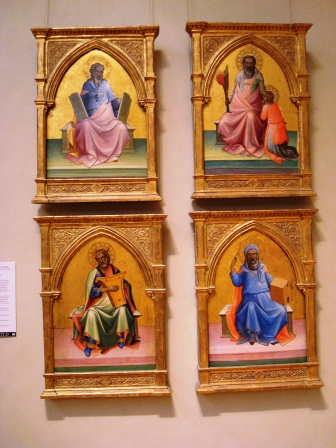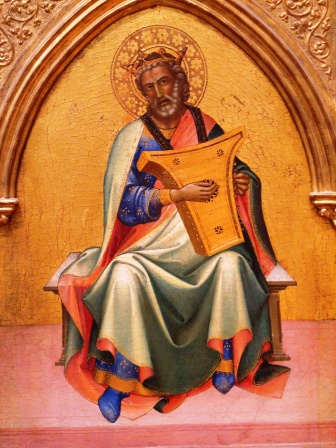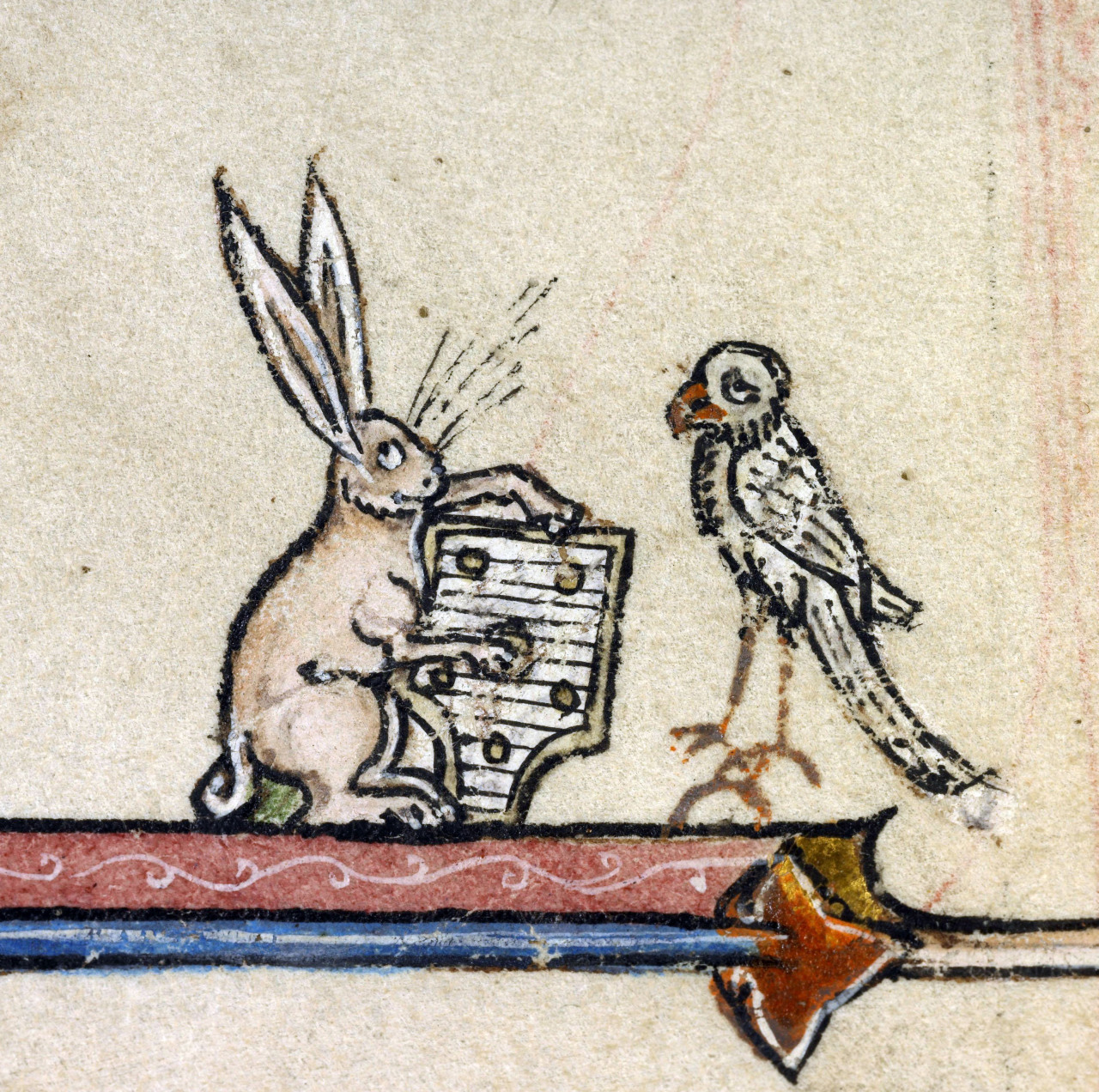Holy Church considers many Old Testament figures to be saints.
Today when you open your trusty copy of the 2005 Martyrologium Romanum you will find, just below the St. Thomas Becket, this interesting entry:
2. Commemoratio sancti David, regis et prophetae, qu, filius Iesse Bethlehemitae, gratiam invenit ante Deum et oleo sancto a Samuele propheta unctus est, ut populum Israel regeret; in civitatem Ierusalem Arcam foederis Domini transtulit ac Dominus ipse mox ei iuravit semen eius in aeternum mansurum esse, eo quod ex ipso Iesus Christus secundum carnem nasciturus esset.
You readers can come up with your renderings of the Latin original, either in a smoother version or perhaps in a slavishly literal way.
Changing tracks slightly, in the Metropolitan Museum of Art there is a series of paintings of Old Testament figures, including King David. These are elements from an altar piece by Florentine painter Lorenzo Monaco (known also as Piero di Giovanni +1422).
Moses is at the top left. Next to him is Abraham. Below him on the bottom right is Noah with his ark.

By thy way, since I took that photo, the paintings have been rearranged… in case you go looking.
Here is David, holding a psaltery. Greek psallo means “to pluck”. While there are also bowed psaltery, this one is plucked by the fingers rather than bowed or struck with a pick or plectrum.

When you get the audio guide at the Met and listen to experts talk about the works, sometimes you get a sample of period music. In this case, you get to hear some music played on a psaltery.
You can hear, below, a sample of bowed psaltery together with a small harp, also appropriate to David, as well as plucked psaltery in two versions of a Medieval Lament for Tristan, which would have been in vogue at the time the painter was working on the altar piece.
Listen as you do your translation!
Also, here again is Tristan’s Lament on a psaltery.
And, just for fun… here is another image of a psaltery bunny from a late 13th c. French manuscript. He even had the audience moved to sorrow.



































“In Spiritu et Littera,” I offer my translation in rhyming iambic pentameter couplets:
Remembrance of the Holy Prophet, King
Who from Bethlehem Jesse’s son did spring
Before the Lord grace he did discover
And bathed by holy oil the prophet blest
O’er Israel to rule at their behest
Unto Jerusalem the Arc conveyed
And soon to him the promise was relayed
His seed to last forever on the earth
And Jesus Christ from thence to take His birth
Apologia: the broken line with no accompanying rhyme was forgetten on account of my children’s antics. I offer:
“From Samuel the annointing covered”
Mea culpa.
I never realized that the psaltery was an instrument. I thought it was the music book of the psalms. This also explains why the hurdy-gurdy was the official instrument of the Latin Rite before the pipe organ, something that left me confused and bewildered.